What is Brazilian pectin sun-baked coffee beans? What is Brazil's semi-sun treatment?
Professional coffee knowledge exchange more coffee bean information please follow the coffee workshop (Wechat official account cafe_style)
Brazilian pectin sun-dried coffee beans
When it comes to solarization, the most widely used is Brazil; the disadvantage of solarization is that it is easy to mix defective beans, and the appearance between beans and beans is poor.

Dry treatment (secado), also known as natural all-day exposure (natural).
Sun drying is one of the ways to treat coffee fruits, which is treated by drying coffee cherries on the sun field for 3-4 weeks after harvest, turning evenly several times a day, so that coffee cherries are evenly heated, and the core and skin of coffee fruit will be separated after dryness. Then remove the pulp and peel with a sheller. And so on, the screening is completed.
There are two methods of fermentation, namely wet hair alcohol and dry hair alcohol, as the name implies, the former adds water, the latter does not add water. In the process of producing alcohol, the seeds and internal pulp will have special changes, which is one of the steps that most affect the flavor of coffee after washing, at this time, the coffee beans are still wrapped in the pericarp, the moisture content is up to 50%, and must be dried. Reduce the moisture content to 12%, otherwise they will continue to be mellow, moldy and rotten. The better treatment is to use sunlight to dry, although it will take 1-3 weeks, but the flavor is very good and very popular. In addition, machine drying is used in some places, which greatly shortens the processing time and makes the flavor inferior to that of sun-dried coffee.
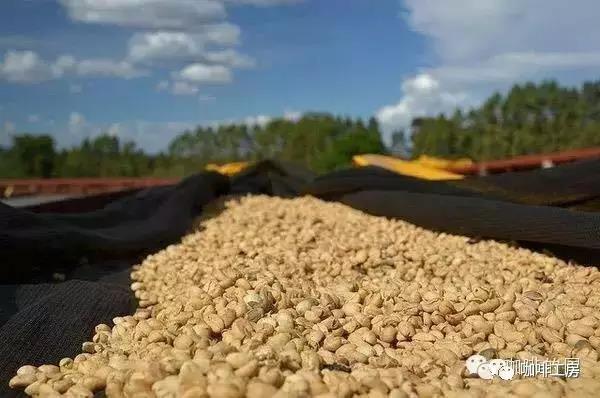
Brazilian coffee fields are endless and are mostly harvested mechanically in order to meet the economic benefits. When 75% of the coffee fruit in the coffee garden turns red, mechanical harvesting is started, followed by the same pre-washing operation, which is moved into the sink to remove floating beans, sift out the sunken beans, and then use a large pulp screening machine to dig out the pulp and remove the pods covered with pectin. The next stage is separate from the washing method: the sticky pods do not need to be moved into the tank to ferment, but to the outdoor bean drying farm. Because of the dry climate in Brazil, the sticky pectin on the pods will harden in about a day or so.
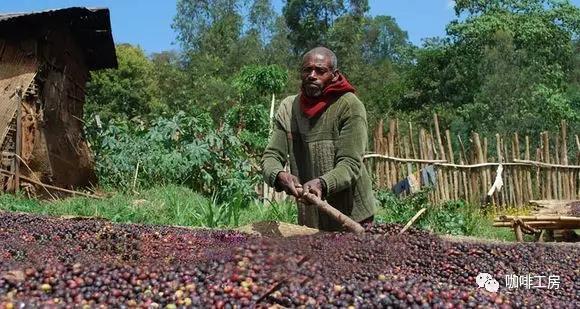
Then use a large number of manpower to turn up and down, so that the pods dry evenly inside and outside, so as not to return to moisture and stink. For about two to three days, with the help of the natural forces of sunlight and dry climate, the pods can achieve a certain degree of dehydration. Then further dry with a dryer, the water content is reduced to 10.5%, and the pods are stored in a special container for about 10 days to further mature, in order to stabilize the quality, remove sheep skins (pods) before export, remove coffee beans, and pack them in stages. The adhesion of the mucous membrane is very strong and is not easy to remove. It must be placed in the slot for about 18-36 hours to make it alcohol and decompose the mucous membrane.
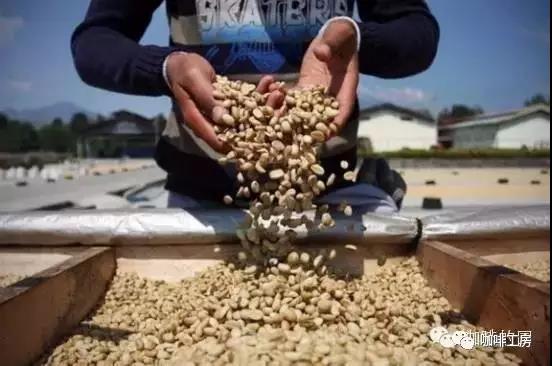
After the coffee fruit is actually picked, it is dried directly in the sun. According to the weather conditions, it is generally necessary to dry the coffee beans for 2 weeks to reduce the water content of the coffee beans to 10%, 12%, and then use a machine to remove the dried peel and pulp. Raw bean processing plants (beneficio) usually retain the parchment shell (parchment; pergamino) on the outside of coffee beans when they are stored and are not removed until they are exported (Costa Rican law stipulates that raw coffee beans cannot be exported with parchment shells). This kind of treatment generally requires sufficient sunshine in the place of origin.
Important Notice :
前街咖啡 FrontStreet Coffee has moved to new addredd:
FrontStreet Coffee Address: 315,Donghua East Road,GuangZhou
Tel:020 38364473
- Prev
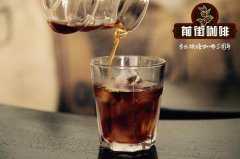
Flavor characteristics of Yunnan small grain coffee | is Yunnan small grain coffee good? Yunnan coffee bean species
Professional coffee knowledge exchange more coffee bean information please follow the coffee workshop (Wechat official account cafe_style) individual hand-brewed coffee recommended | Qianjie coffee boutique Yunnan small-grain coffee beans-Yunnan Huaguoshan Tiepi Caccong Gang Manor Red Honey treatment country: Yunnan producing area: Baoshan Conggang Village height: 1700 meters varieties: Catimor planting: pesticide-free planting (red)
- Next
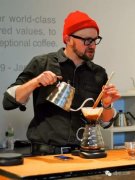
Hand coffee brewing skills | what are American hand brewing and Japanese hand brewing? Differences in coffee-making skills with different hands
Professional coffee knowledge exchange more coffee bean information please follow the coffee workshop (Wechat official account cafe_style) have you tried the coffee made in American pot? You will find that with the same coffee bean, the American pot will be a little more bitter and astringent than the coffee made by hand. The key is that the high water temperature of the American pot causes this phenomenon. The average American pot is actually sprayed through atmospheric pressure.
Related
- Beginners will see the "Coffee pull flower" guide!
- What is the difference between ice blog purified milk and ordinary milk coffee?
- Why is the Philippines the largest producer of crops in Liberia?
- For coffee extraction, should the fine powder be retained?
- How does extracted espresso fill pressed powder? How much strength does it take to press the powder?
- How to make jasmine cold extract coffee? Is the jasmine + latte good?
- Will this little toy really make the coffee taste better? How does Lily Drip affect coffee extraction?
- Will the action of slapping the filter cup also affect coffee extraction?
- What's the difference between powder-to-water ratio and powder-to-liquid ratio?
- What is the Ethiopian local species? What does it have to do with Heirloom native species?

